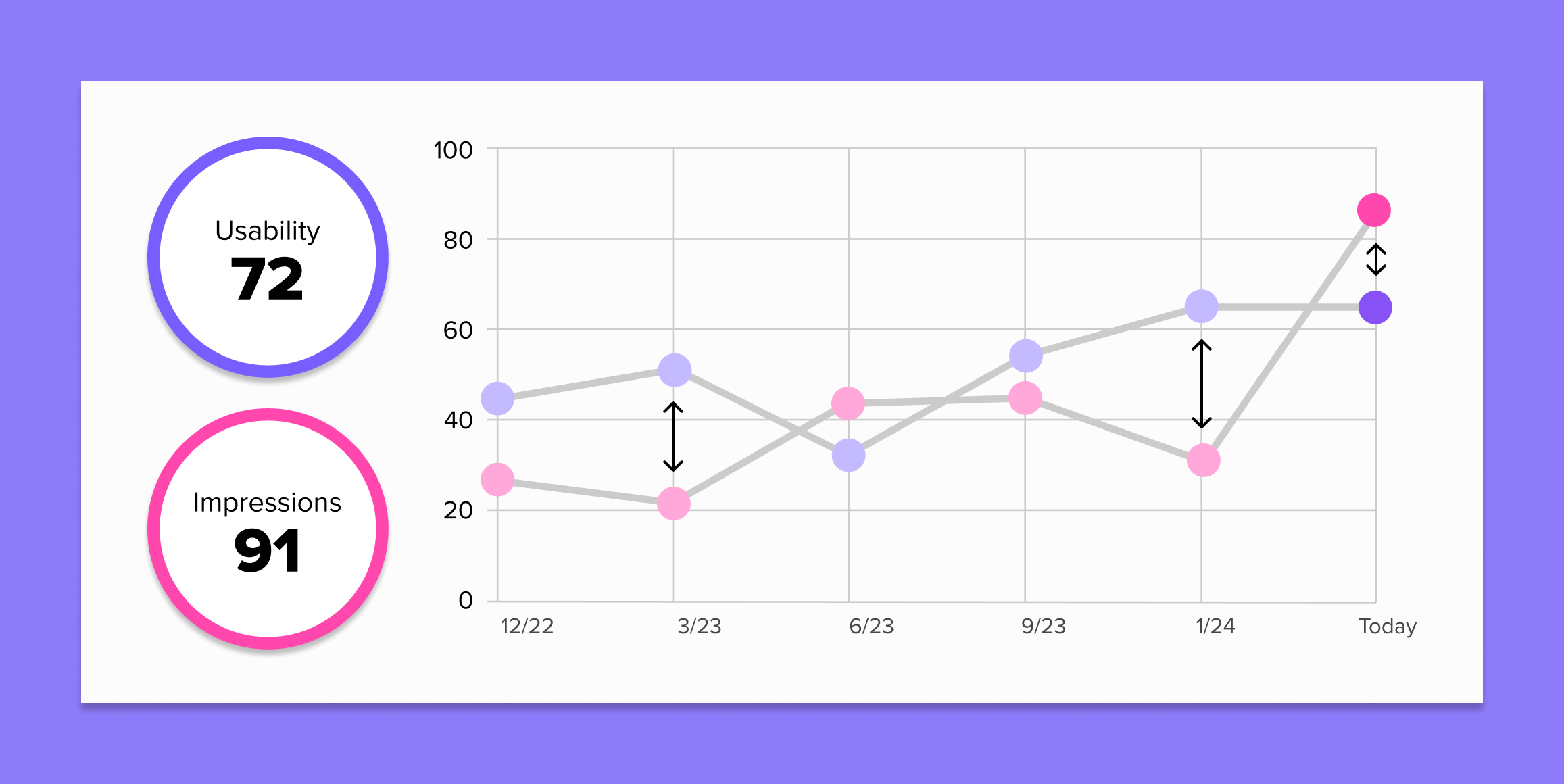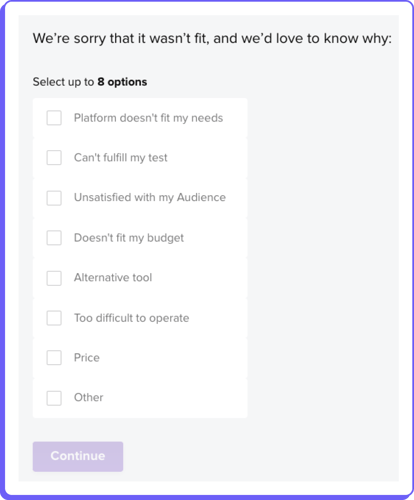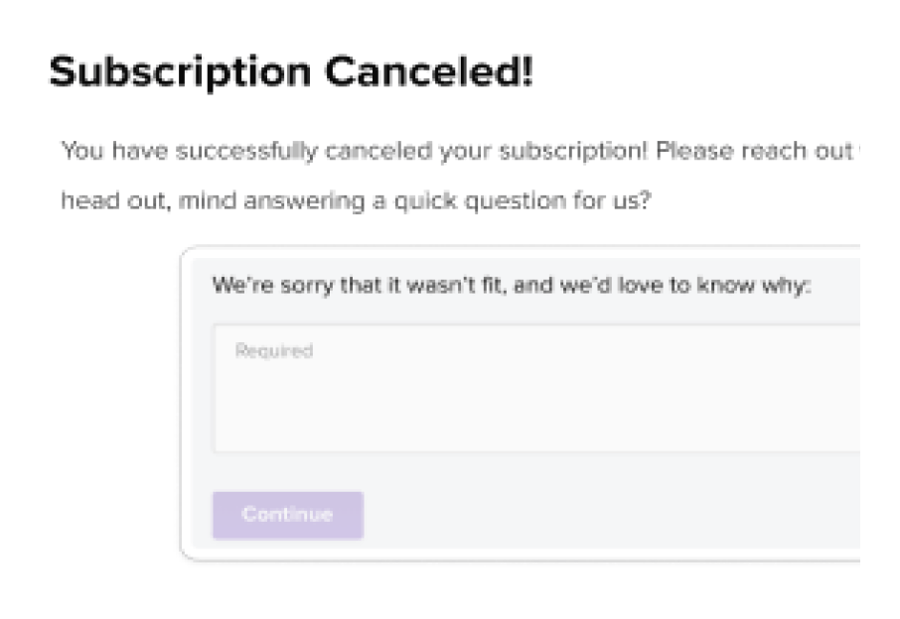Enhance Customer Retention with Gap Analysis
Leverage Helio to perform gap analyses and discover new opportunities to increase customer value and retention. Use insights to refine your strategies and ensure long-term customer loyalty.


Identify Retention Opportunities
Discover gaps in your current offerings that could be improved to increase customer satisfaction and loyalty.
Improve Customer Value
Optimize your product and service offerings based on direct feedback, ensuring you provide maximum value to your customers.
Boost Long-Term Loyalty
By addressing identified gaps, keep your customers satisfied and engaged for longer, enhancing overall retention rates.
Map to UX Metrics
Comprehension
Completion Rate
Reaction
Explore a Relevant Case Study
Business questions that can be addressed with gap analysis
Here are some common business questions product and marketing leaders ask that can be addressed with gap analysis

Using customer exit surveys, you can capture the why behind a user’s departure through Helio. These are perfect for finding quick insights to help you understand where gaps in your product or service might be.
Here’s how you can do this in your own platform:
- Build an exit survey using Helio Intercepts
- Add in a step after a user’s departure with the link to the Helio report
- Start diving into the data as your users come through and take the survey
Using Helio’s powerful reporting tools, you can reveal valuable insights from the feedback you receive.
For example, you could reveal:
- Missing features
- Pricing misalignments
- Bugs
There’s a plethora of other insights that could be derived from this research, and with this, you can start to find and highlight definite gaps in your product, which is now backed by data, making it easier to communicate with stakeholders.
Knowing your platform types like apps and the web have much more of an impact on your users than you’d think. Some more than others. Which is exactly what we found with testing with one of our many Helio audiences, beauty product consumers.
From our report, this audience expects the main bulk of these activities (purchasing swag, signing up for an account, browsing skin articles) to be done within a website. And from this you can also see that there’s a specificity with referring new clients through social media, where there might be a need to have a social media presence for these beauty shoppers.
Using the action map above we created above, we were able to align the beauty company, to where they need to be putting their efforts into to get the most impact for their customers.
If you don’t know what your customers want and how they want them, how could you possibly work towards keeping them on your platform?
This is exactly the answer that we helped solve for one of our customers. We highlighted where they need to focus and where they can leave out.
From this action map we put together from one of our surveys, we were able to highlight the actions that most beauty consumers took on a particular platform.
Consumers expected these actions to happen depending on the platform:
- Websites: Purchasing swag, purchasing a gift card, account signups, browsing for skin articles, and saving content
- Phone Apps: Purchasing a gift card
- Social Media: Referring new clients
- Text: None of these customers expected anything to happen out of these buckets in text
By highlighting these areas, we can now focus on the important parts for the website, apps, and social media- by enhancing those action areas. We also now know that we can leave out text for something else.
Helio’s list of over 1000 audiences and powerful reporting tools makes segmenting customers and finding potential user roadblocks a breeze.
With segmentation analysis, we can dive into who our users are and what their biggest pain points are.
For example, intercepts in Helio are perfect for this. You can create an intercept in Helio to embed into your application to start collecting user feedback.
How to set up Gap Analysis

Define Your Objectives
Clearly outline your goals for conducting a gap analysis, such as identifying reasons for churn or discovering new value opportunities.

Select Appropriate Research Methods
Choose methods that best suit your objectives, including surveys, interviews, and competitive analysis.

Gather Customer Feedback
Collect customer feedback using Helio’s tools to gather reliable and actionable insights.

Analyze Insights
Synthesize the data to identify patterns and insights, focusing on gaps in your offerings and areas for improvement.

Develop and Implement Strategies
Use the insights to develop strategies to close identified gaps and improve customer retention.

Monitor and Adjust
Continuously monitor the impact of your changes and adjust your strategies as needed to ensure ongoing customer satisfaction and retention.
The focus of gap analysis should be getting to the other side. If you bend-over to analyze a gap too long, you’ll probably fall into it. Yeah

Ryan Lilly
Test Template Example
FAQs
A gap analysis involves comparing your current performance or offerings with desired outcomes or benchmarks to identify areas for improvement. This process helps uncover gaps that, when addressed, can lead to increased customer satisfaction and retention.
Gap analysis is crucial for customer retention because it helps identify why customers may be leaving and provides insights into how to improve your offerings to better meet their needs. By addressing these gaps, businesses can increase customer satisfaction and loyalty, ultimately improving retention rates.
Common methods include surveys to gather quantitative data on customer satisfaction, interviews for qualitative insights, competitive analysis to compare your offerings with others in the market, and feedback analysis to identify common themes and areas for improvement.
Gap analysis specifically focuses on identifying areas where your current performance does not meet customer expectations or market standards. In contrast, other types of research might address broader issues such as overall market trends, customer satisfaction, or detailed product usability.
Challenges include gathering representative feedback that accurately reflects the target audience, interpreting diverse opinions to find common ground, and integrating feedback effectively into the development process without derailing the project.
To ensure accurate interpretation, businesses should engage experienced researchers to design and conduct studies, validate findings across multiple data sources to confirm trends and be mindful of biases that could skew interpretations.



